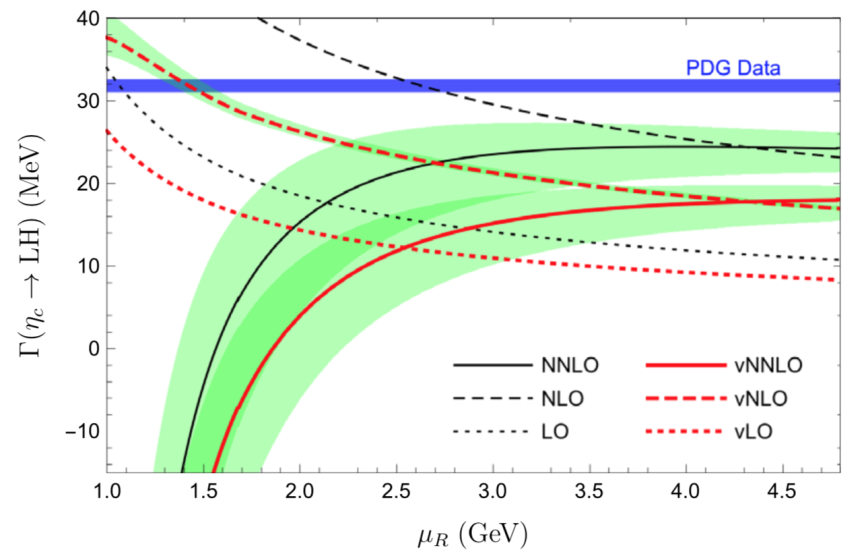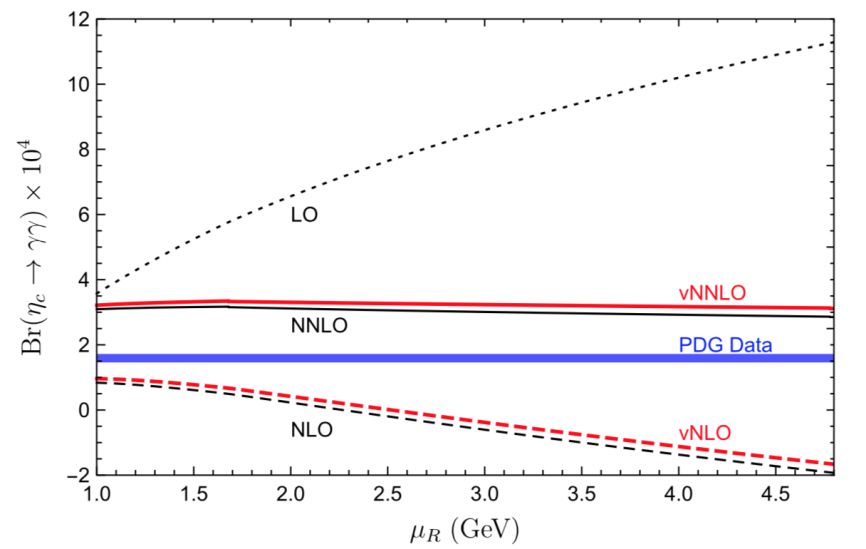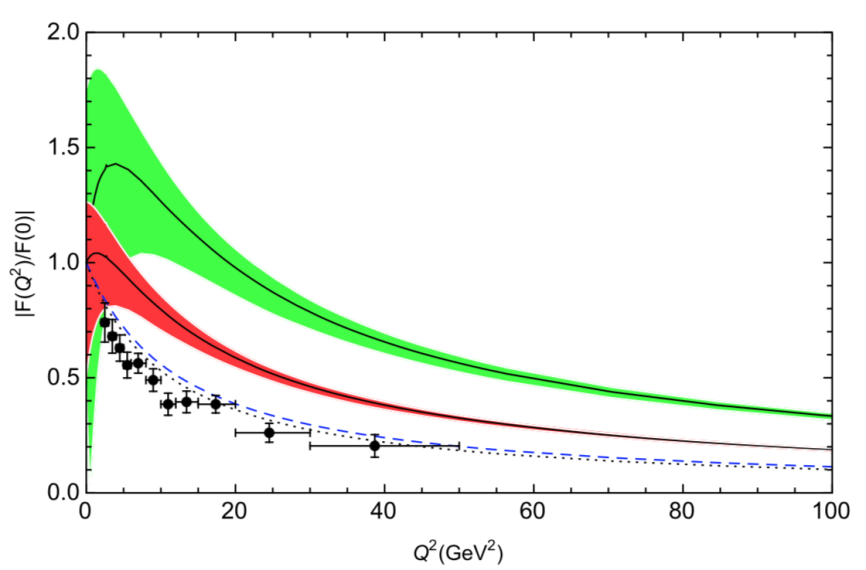Progress in Heavy Quarkonium and QCD
Scientists have for the first time calculated the next-to-next-to-leading order (NNLO) radiative correction to the hadronic width of pseudoscalar quarkonium,and conducted a detailed phenomenological study using the latest experimental data. The work, which marks an important progress in heavy quarkonium physics and Quantum Chromodynamics (QCD), was published in the journal Physical Review Letters on December 20th, 2017.
The research was done by Prof. Jia Yu from the Institute of High Energy Physics, in collaboration with Prof. Feng Feng from the China University of Mining and Technology and Prof. Sang Wen-Long from Southwest University.
Understanding heavy quarkonium annihilation decay has historically played a key role in establishing the asymptotic freedom of QCD. Around 1980, the next-to-leading order (NLO) perturbative correction for the hadronic width of pseudoscalar quarkonium, at the lowest order in velocity expansion, was independently computed by one group from Italy, and another from Japan. The NLO correction was found to be significant, which naturally raised curiosity about the impact of the hitherto unknown NNLO correction.
Due to insurmountable technical difficulties, essentially no progress was made toward this goal in the following four decades. A breakthrough finally occurred in the summer of 2017. Benefiting from rapid technical advances in multi-loop computation in recent years, Prof. Jia Yu and his team finally succeeded in accomplishing the challenging calculation of the complete NNLO correction for the inclusive decay rate of ηc, with the help of the National Tianhe Supercomputing Center in Guangzhou.
In their paper, the team has clearly verified, for the first time, that the effective-field-theory approach based on the first principles of QCD, the nonrelativistic QCD (NRQCD) factorization, still remains valid at NNLO for this inclusive decay process. Nevertheless, when combining this new NNLO piece with existing relativistic corrections, they found that, the state-of-the-art NRQCD predictions are in severe tension with the measured ηchadronic width, and in particular, with the measured branching fraction of ηc decay to two photons.
These discrepancies indicate that, though the influential NRQCD approach has solid theoretical ground, the charm quark mass may not be viewed as truly large, therefore the utility of NRQCD, when applied to charmonium, appears to face serious challenges. On the other hand, NRQCD approach appears to be capable of reliably accounting for the measured ηb hadronic width.
The team's conclusion is compatible with an earlier paper they published in Physical Review Letters in 2015, namely that the NRQCD approach faces some crisis when applied to charmonium exclusive production process.
This research was supported in part by the National Natural Science Foundation of China.

The predicted ηc total width as a function of renormalization scale μR. The blue band denotes the measured ηc hadronic width. The curves labeled by LO, NLO, NNLO represent the various perturbative accuracies in NRQCD predictions. The green band characterizes the theoretical uncertainty brought by varying the NRQCD factorization scale μΛ(Image by the team)

The predicted branching fraction for ηc decay to two photons as a function of renormalization scale μR.The blue band represents the measured value. The curves labeled by LO, NLO, NNLO represent the various perturbative accuracies in NRQCD predictions. (Image by the team)

NRQCD predictions for the (normalized) γ*γηc transition form factor as a function of Q2. The solid black dots with error bar represent the BaBar data. The dotted, dashed, and solid curves represent the LO, NLO and NNLO predictions in the nonrelativistic limit.(Image by the team)
Contact Information
Mr.Guo Lijun
ljguo@ihep.ac.cn